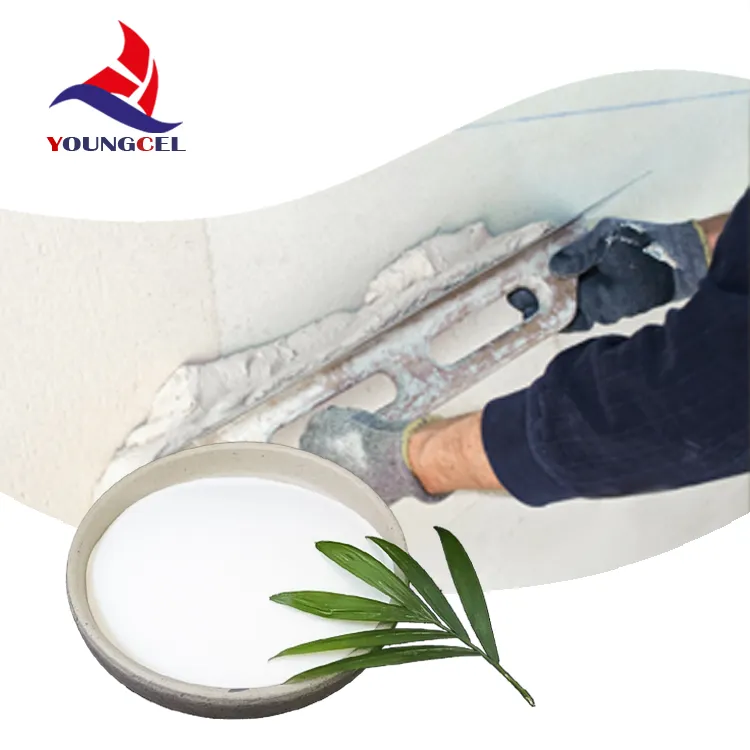The Role of Hydroxypropyl Methylcellulose (HPMC) in Building Coatings and Adhesives
In the construction industry, the choice of materials significantly impacts both the performance and durability of structures. Among the various materials used, building coatings and adhesives play crucial roles in enhancing aesthetic appeal while providing structural integrity. One such essential ingredient that has gained popularity in recent years is Hydroxypropyl Methylcellulose (HPMC). This cellulose derivative offers numerous benefits that make it an indispensable component in modern building materials.
What is HPMC?
HPMC is a non-ionic cellulose ether derived from naturally occurring cellulose. It is produced through the modification of cellulose molecules, primarily derived from wood pulp or cotton. This modification introduces hydroxypropyl and methyl groups into the cellulose structure, resulting in a product that exhibits unique properties such as water solubility, thickening, and film-forming capabilities. These attributes make HPMC particularly valuable in the formulation of building coatings and adhesives.
Applications in Building Coatings
Building coatings serve numerous purposes, including protection from environmental elements, aesthetic enhancement, and surface preparation
. HPMC enhances the performance of coatings in several ways1. Thickening Agent HPMC is widely used as a thickening agent in coatings. By increasing the viscosity of the coating mixture, it helps ensure proper application and coverage. This prevention of sagging and dripping makes it easier for contractors to achieve a uniform finish.
2. Water Retention One of the essential attributes of HPMC is its excellent water retention capacity. This characteristic is crucial in the development of cement-based coatings, as it allows for extended working time and improved adhesion to substrates. By retaining moisture, HPMC ensures that the curing process is optimized, leading to stronger binders.
3. Film-Forming Ability HPMC exhibits superior film-forming properties, which contribute to the durability and performance of coatings. A well-formed film protects the underlying substrate from moisture penetration and physical abrasion, thereby extending the lifespan of the coated surface.
4. Enhanced Workability HPMC significantly improves the workability of building coatings. It allows for better spreadability and leveling characteristics, making it easier for applicators to achieve the desired finish without the formation of bubbles or other imperfections.
building coating adhesive hpmc

5. Environmentally Friendly As environmental awareness grows, the demand for eco-friendly building materials rises. HPMC is derived from renewable sources, and its use in coatings contributes to lower volatile organic compound (VOC) emissions. This environmental compatibility aligns with the industry's move toward more sustainable practices.
Applications in Adhesives
Adhesives are fundamental to ensuring the structural integrity of various building materials, including tiles, panels, and laminates. HPMC plays a pivotal role in the formulation of construction adhesives by
1. Increasing Bond Strength HPMC enhances the adhesive properties of various formulations, leading to better bonding with different substrates. Its water-retention capacity ensures adequate curing time, allowing for a stronger bond to form.
2. Improving Open Time The open time refers to the period during which an adhesive remains workable after application. HPMC helps extend this time, allowing installers to adjust materials during the application process, which is particularly beneficial for large or complex projects.
3. Enhancing Flexibility The addition of HPMC can enhance the flexibility of adhesives, allowing them to accommodate slight movements and thermal expansion of construction materials. This flexibility reduces the risk of crack formation, thereby increasing the longevity of the bond.
4. Ease of Cleaning HPMC-modified adhesives typically exhibit improved washability, making clean-up easier during and after the installation process. This property not only enhances the user experience but also minimizes leftover residue on constructed surfaces.
Conclusion
In summary, Hydroxypropyl Methylcellulose (HPMC) is an invaluable component in the formulation of building coatings and adhesives. Its unique properties, including thickening, water retention, and film-forming abilities, significantly enhance the performance and durability of construction materials. As the construction industry continues to evolve towards sustainability and efficiency, the demand for ingredients like HPMC will only increase. By leveraging the benefits of this versatile cellulose derivative, manufacturers can create products that not only meet but exceed the expectations of modern construction practices.
-
Rdp Powder: Key Considerations for Wholesalers in the Building Materials IndustryNewsJul.08,2025
-
Key Considerations for Wholesalers: Navigating the World of Hpmc - Based ProductsNewsJul.08,2025
-
Hpmc Detergent: Key Considerations for WholesalersNewsJul.08,2025
-
Key Considerations for Wholesalers: China Hpmc For Tile Adhesive, Coating Additives, Concrete Additives, and MoreNewsJul.08,2025
-
Crucial Considerations for Wholesalers: Navigating the World of Construction MaterialsNewsJul.08,2025
-
Key Considerations for Wholesalers Sourcing Additive For Cement, Additive For Concrete, Additive For Putty from Additive Manufacturer Shijiazhuang Gaocheng District Yongfeng Cellulose Co., Ltd.NewsJul.08,2025




